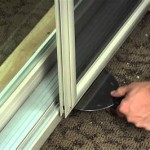Unveiling the Costs of Patio Pavers: A Comprehensive Guide
Creating an inviting outdoor space significantly enhances a property's appeal and value. Patios, constructed with durable and aesthetically pleasing pavers, are a popular choice for homeowners seeking to maximize their enjoyment of the outdoors. However, understanding the financial implications associated with paver patio installation is crucial for effective budgeting and project planning. This article offers a comprehensive overview of the various cost factors involved in paver patio construction, providing a clear and informative guide for prospective buyers.
The cost of a paver patio is not a fixed figure; it is influenced by a complex interplay of factors. These factors range from the chosen paver material and the size of the patio to the complexity of the design and the prevailing labor rates in the area. Careful consideration of each of these variables is essential for obtaining an accurate estimate and avoiding unexpected expenses during the project.
Understanding the Primary Cost Drivers
Several key factors directly impact the overall cost of a paver patio project. A thorough understanding of these drivers is essential for making informed decisions and optimizing the budget.
Paver Material: The type of paver selected is arguably the most significant cost driver. Pavers are available in a wide range of materials, each possessing unique characteristics and price points. Concrete pavers, known for their affordability and versatility, generally cost between $3 to $7 per square foot. Brick pavers, offering a classic and timeless aesthetic, typically range from $5 to $10 per square foot. Natural stone pavers, such as flagstone, travertine, and bluestone, are the most expensive option, with prices ranging from $8 to $25 per square foot or even higher, depending on the rarity and availability of the stone.
Concrete pavers are manufactured using a mixture of cement, aggregates, and pigments. They are available in a variety of shapes, sizes, colors, and textures, making them a versatile choice for various design styles. Brick pavers, traditionally made from clay, offer a durable and aesthetically pleasing option. Their reddish-brown hue adds warmth and character to any outdoor space. Natural stone pavers, quarried directly from the earth, exhibit unique variations in color, texture, and pattern, lending a distinctive and luxurious appeal to patios.
The thickness of the paver also plays a role in the material cost. Thicker pavers, generally used for driveways or areas with heavy foot traffic, will be more expensive than thinner pavers designed for patios and walkways.
Patio Size and Shape: The overall square footage of the patio directly correlates with the total cost of materials and labor. A larger patio naturally requires more pavers and more labor hours to install. In addition to the size, the shape of the patio also influences the cost. Intricate and complex designs, featuring curves, angles, and custom patterns, require more precise cutting and fitting, which increases labor time and potentially generates more material waste.
Simple rectangular or square patios are generally the most cost-effective to install. More elaborate designs, while visually appealing, necessitate greater skill and precision, translating into higher labor costs. Before finalizing the design, it is advisable to consult with a landscape professional to assess the complexity of the layout and obtain an accurate cost estimate.
Labor Costs: Professional installation significantly contributes to the overall cost of a paver patio. Labor rates vary depending on the geographical location, the experience and expertise of the contractor, and the complexity of the project. In most areas, labor costs range from $3 to $10 per square foot. This includes site preparation, grading, base installation, paver laying, cutting, joint filling, and compaction.
Site preparation is a crucial step that involves clearing the area, removing existing vegetation, and leveling the ground. Proper grading ensures proper drainage and prevents water from pooling on the patio surface. The base installation typically involves laying a compacted layer of gravel or crushed stone, which provides a stable and level foundation for the pavers. The pavers are then carefully laid according to the chosen pattern and design. Cutting pavers to fit around edges and corners is a meticulous process that requires precision and skill. Once the pavers are laid, the joints are filled with sand or polymeric sand, which helps to lock the pavers in place and prevent weed growth. Finally, the patio surface is compacted to ensure a smooth and even finish.
Obtaining multiple quotes from reputable contractors is essential for comparing labor rates and selecting the most qualified professional for the project. It is also crucial to verify the contractor's credentials, insurance coverage, and references before signing a contract.
Additional Cost Considerations
Beyond the primary cost drivers, several other factors can influence the overall expense of a paver patio project. These considerations should be factored into the budget to avoid unexpected costs.
Site Preparation: The condition of the installation site can significantly impact the cost of preparation. If the site requires extensive excavation, grading, or removal of existing structures, the overall project cost will increase. For example, if the soil is unstable or poorly drained, additional measures may be required to ensure a solid foundation for the patio. This could involve installing drainage systems, amending the soil with stabilizing agents, or using geotextile fabrics to improve soil stability.
Furthermore, if there are underground utilities or obstacles that need to be relocated or worked around, the cost of site preparation will increase. It is essential to conduct a thorough site assessment before starting the project to identify any potential challenges and obtain an accurate cost estimate.
Permits and Inspections: Depending on the local regulations and the size of the patio, building permits may be required. The cost of permits varies depending on the municipality and the complexity of the project. In addition to the permit fees, there may also be inspection fees associated with ensuring that the patio meets the required building codes. Failing to obtain the necessary permits can result in fines and delays, so it is crucial to check with the local building department before starting the project.
Design Complexity: As mentioned earlier, the complexity of the patio design significantly influences the labor cost. Intricate patterns, curves, and custom features require more precise cutting and fitting, which increases labor time and potentially generates more material waste. Simple, straightforward designs are generally the most cost-effective. Consider the overall aesthetics of the outdoor space and choose a design that complements the existing landscape and architecture while staying within the budget.
Additional Features: Incorporating additional features, such as built-in seating, fire pits, retaining walls, or outdoor lighting, will increase the overall cost of the patio project. These features require additional materials and labor to install. The cost of these features varies depending on the complexity of the design and the materials used.
Cost Saving Strategies
While paver patio installation can be a significant investment, several strategies can help reduce the overall cost without compromising quality or aesthetics.
Choose Affordable Pavers: Opting for concrete pavers over natural stone can significantly reduce the material cost. Concrete pavers are available in a wide range of colors, textures, and styles, allowing homeowners to achieve a desired aesthetic without breaking the bank. Consider exploring various concrete paver options and selecting a product that offers the best value for the money.
Simplify the Design: Choosing a simple and straightforward design will minimize labor costs. Avoid intricate patterns, curves, and custom features that require extensive cutting and fitting. A simple rectangular or square patio is generally the most cost-effective to install.
DIY Some of the Work: Depending on the homeowner's skill and experience, some aspects of the project can be completed as a do-it-yourself (DIY) project. This could include site preparation, such as clearing the area and removing vegetation. However, laying the pavers and ensuring proper drainage and compaction may require professional expertise to ensure a durable and long-lasting patio. If considering a DIY approach, it is crucial to research the required techniques and invest in the necessary tools and equipment.
Shop Around for Materials: Prices for pavers and other materials can vary significantly between suppliers. Obtain quotes from multiple suppliers to compare prices and find the best deals. Consider purchasing materials during off-season months when prices may be lower.
Negotiate with Contractors: Obtain multiple quotes from reputable contractors and negotiate the price. Be clear about the budget and the desired outcome. Inquire about potential discounts or cost-saving measures that the contractor may offer. It is important to have well defined contract which includes the labor cost, material cost, the timeline, and payment scheme.
By carefully considering these cost-saving strategies, homeowners can create a beautiful and functional paver patio without exceeding their budget.

How Much Does A Patio Cost Installation 2024 Landscaping Network

How Much Does It Cost To Install Patio Pavers Whitehouse Landscaping

How Much Does It Cost To Build A Paver Patio

How Much Does A New Patio Cost To Build

Paver Cost Landscaping Network

Average Flagstone Patio S In 2024 Forbes Home

Cost To Install A Patio 2024 Calculator

Stone Patio Paving Costs Sol Vida Landscaping

How Much Does A 20x20 Paver Patio Cost The Sealer

How Much Does A Paver Patio Cost 2024 Data
Related Posts








